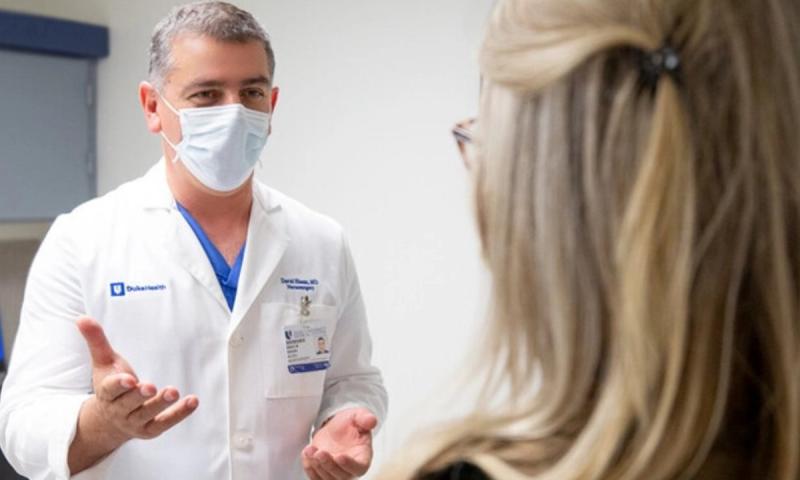
Duke University Hospital has been selected as a Center of Excellence for the treatment of brain abnormalities called cerebral cavernous malformations (CCM) in both adults and children.
The designation by the Alliance to Cure Cavernous Malformation recognizes the hospital for providing expert, integrated, multi-disciplinary care and cutting-edge research to CCM patients and their families. It is the only CCM Center of Excellence in North Carolina.
A cavernous malformation is a collection of abnormal blood vessels often found in the brain and the spinal cord. They are a common cause of stroke, brain hemorrhage, and seizures in otherwise healthy patients. CCMs can grow at any age, including in children, though they are most likely to become symptomatic in young adults.
“Duke University Hospital is privileged and honored to be certified as one of the very few Centers of Excellence in the country. This is where the genes causing cerebral cavernous malformations were discovered,” said Dr. David Hasan, a cerebrovascular neurosurgeon at Duke.
“We use state of the art of tools to diagnose the disease and provide effective care,” Hasan said. “Our clinical excellence and the expertise of our neurosurgeons has also led to great patient outcomes even as they tackle very complex cases.”
The Alliance to Cure Cavernous Malformation is a not-for-profit organization that works to support research for better treatments and a cure for the brain conditions. Criteria for it’s Center of Excellence designation include:
- Designating a multidisciplinary board of clinical specialists, including cerebrovascular neurosurgeons; vascular, epilepsy, and pediatric neurologists; neuroradiologists; and geneticists who all collaborate in the diagnosis and management of patients with cavernous malformations.
- Having at least two additional specialty physicians with cavernous malformation expertise in any of the following disciplines: pediatric neurology, pediatric neurosurgery, dermatology, or neuro-ophthalmology.
- Maintaining an active clinical research program with a history of publications that may include natural history studies, comparative treatment outcomes research, genetics/genomics research, and/or clinical drug trials.
- Organizing at least one Patient Education event annually either independently or in collaboration with Alliance to Cure Cavernous Malformation.